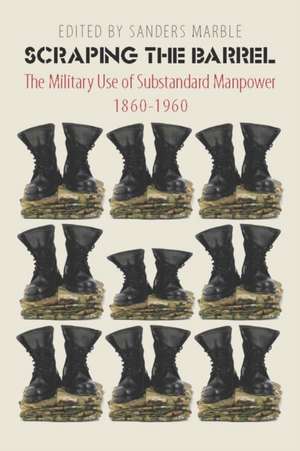Scraping the Barrel – The Military Use of Substandard Manpower, 1860–1960
Autor Sanders Marbleen Limba Engleză Hardback – 13 aug 2012
Preț: 593.08 lei
Preț vechi: 732.20 lei
-19% Nou
Puncte Express: 890
Preț estimativ în valută:
113.49€ • 118.79$ • 94.46£
113.49€ • 118.79$ • 94.46£
Carte tipărită la comandă
Livrare economică 31 martie-14 aprilie
Preluare comenzi: 021 569.72.76
Specificații
ISBN-13: 9780823239771
ISBN-10: 0823239772
Pagini: 372
Dimensiuni: 152 x 229 x 15 mm
Greutate: 0.61 kg
Ediția:New.
Editura: Wiley
ISBN-10: 0823239772
Pagini: 372
Dimensiuni: 152 x 229 x 15 mm
Greutate: 0.61 kg
Ediția:New.
Editura: Wiley
Notă biografică
Descriere
Discusses how armies have used sub-standard manpower in wars from 1860 to the 1960s






